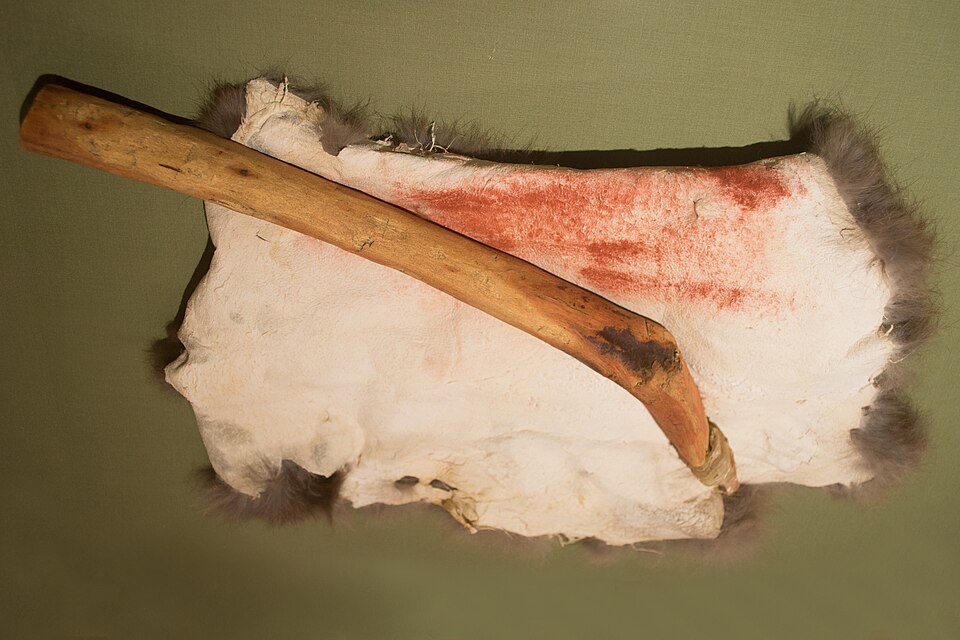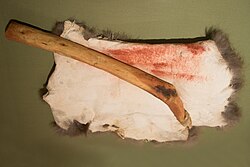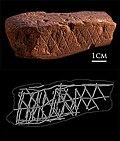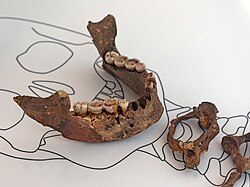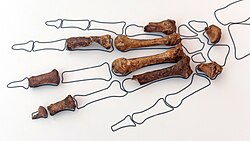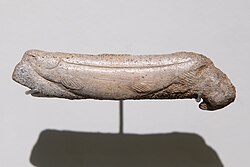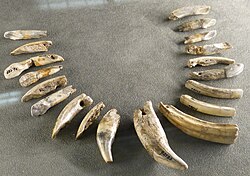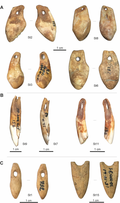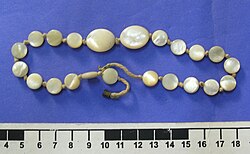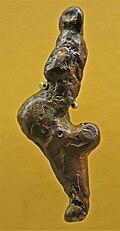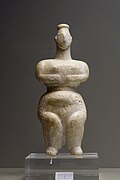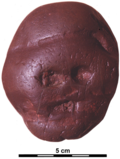Humans have long used and selected for certain materials due to their aesthetic appeal.
More Articles in Human Bridges
Guides
Authors in Human Bridges
Humans have long used and selected for certain materials due to their aesthetic appeal. These include pigments like red ocher, ivory, human and animal teeth, and other lustrous materials, such as mother of pearl. Many of these materials have attracted the eye of our human ancestors because of an inherent lustrous appearance or their potential to become lustrous when polished.
Below are eleven images representing a selection of the materials used and objects crafted by humans throughout time in part due to their aesthetic appeal.
-
A scraper and ocher powder used to work leather. One of the many utilitarian applications of ocher includes its use in hide processing. Courtesy of the Alcoy Municipal Archaeological Museum.
-
Ocher stone with linear engravings found at a workshop in Blombos Cave, South Africa. This stone dates to approximately 70,000 years ago.
-
The skeletal remains of the "Dama Roja del Mirón", or the "Red Lady of Mirón," whose burial was covered in red ocher. This ocher was gathered from nonlocal sources, suggesting it may have been collected specifically for special burial rites or for use as a preservative.
-
The skeletal remains of the "Dama Roja del Mirón", or the "Red Lady of Mirón," whose burial was covered in red ocher. This ocher was gathered from nonlocal sources, suggesting it may have been collected specifically for special burial rites or for use as a preservative.
-
A spear thrower with an engraved fish made out of reindeer antler. Found in the Isturitz cave in France and dates to 19,000 to 14,000 years ago.
-
An Aurignacian necklace made out of the teeth of several animals: bear, horse, elk, beaver. Found in Mladex, Czech Republic.
-
Pendants from Upper Paleolithic, found in the Satsurblia cave, Georgia. Made out of (A) red deer vestigial canines, (B) ungulate incisors, (C) bone.
-
A necklace made out of strung mother of pearl. Mother of pearl has been used for adornment for thousands of years due to its lustrous appearance and finish.
-
The Venus of Monpazier, found in Monpazier, France in 1970. The figurine is carved from limonite and dates to around 30,000 to 20,000 BP.
-
A female figurine made of marble. From the Neolithic Period and dates from 6500 to 5800 BCE. Courtesy of the National Archaeological Museum of Athens.
-
The Makapansgat cobble, a jasperite pebble transported to a cave in the Makapan Valley, South Africa, where it was deposited almost 3 million years ago. This pebble is a notable manuport, a possible example of early paleoart, and is the oldest known objects of its kind.



